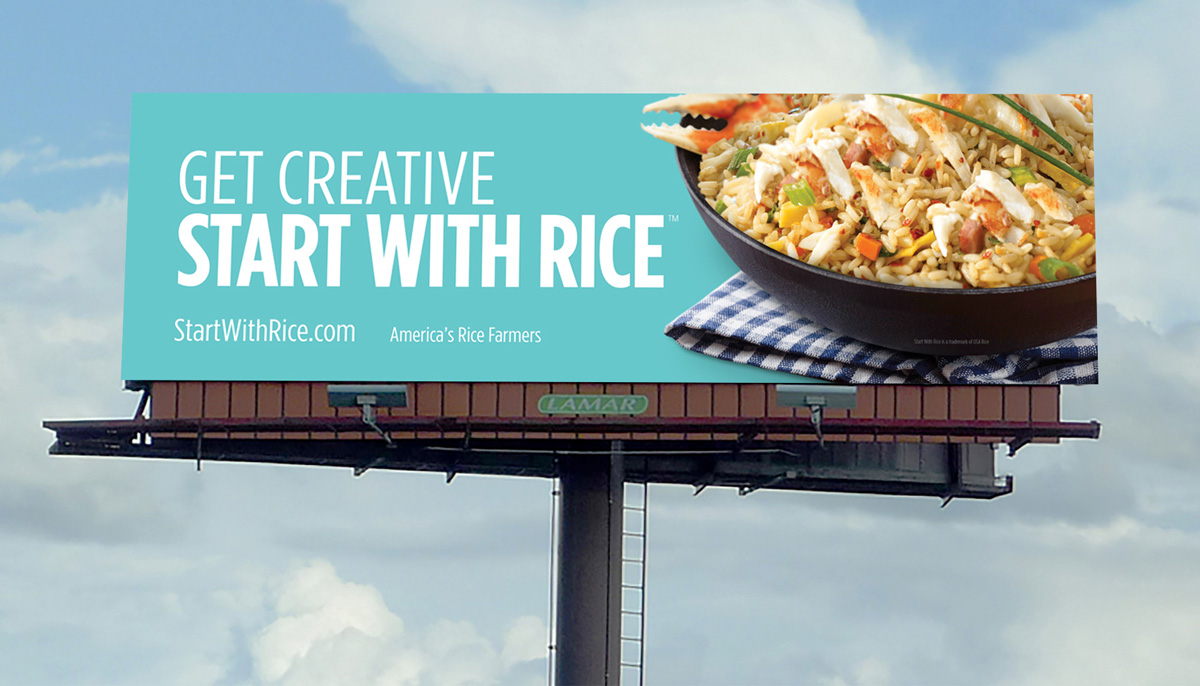 Brought to you by America's rice farmers
Brought to you by America's rice farmers
May 27, 2021
ARLINGTON, VA – Last year, as the scope of the coronavirus pandemic was becoming clear, and consumers were shifting from eating out to cooking at home, leaders in the organization saw an opportunity as retail demand for rice surged, even as foodservice slowed to a trickle.
“Retail rice sales were going through the roof starting in mid-March 2020 as lockdowns were taking effect and Americans began panic buying of supplies like toilet paper, cleaning products, and rice and beans,” explained Robbie Trahan, a rice miller from Louisiana and chair of the USA Rice Domestic Promotion Committee. “We knew that not only did we have increased rice sales in general, we had a lot of new customers specifically who maybe weren’t very familiar with rice. We saw an opportunity to educate them and make them lifelong rice eaters.”
Trahan assembled a team of farmers and millers and advertising and branding experts to come up with a plan, which they quickly did.
“For three years the Louisiana Rice Promotion Board had been running a very impactful ‘Start with Rice’ campaign in the state that was based on USA Rice consumer research,” Trahan said. “We decided to base our effort on that work to show the messages would resonate in places less historically connected to rice than Louisiana.”
After analyzing more than three dozen U.S. markets against several factors Trahan’s task force came back with the recommendation to target consumers in Boise, Idaho; Green Bay, Wisconsin; Peoria, Illinois; Roanoke, Virginia; Spokane, Washington; Springfield, Illinois; and Toledo, Ohio, with paid advertisements and retail partnerships.
“Our agency created 16 unique radio ads and 42 billboards ensuring consumers would be exposed to rice messages a lot, but that they’d be varied and fresh,” Trahan said. “We bought time on 28 traditional radio stations and streaming audio services Pandora, Spotify, and iHeart, all of which delivered more than 58.8 million impressions between mid-November 2020 and January 2021.”
He said retail partnerships delivered more than 4 million additional consumer impressions thanks to in-store signage, shelf talkers, and interactive kiosks at more than 560 Kroger and Woodman’s stores, and webpage and newsletter promotions with 1.4 million Meijer shoppers.
“The next step was to analyze the program. We looked at consumer attitudes, sales data, and consumer activation, and across every metric we showed very positive and encouraging results,” Trahan said.
Almost half of consumers surveyed in the test markets could recall 'Start with Rice' advertising and more than a quarter were able to accurately repeat rice messages with no help from researchers. About one third of respondents correctly identified “America’s rice farmers” as the sponsors of the ads, with others naming “USA Rice Federation” and “Certified rice producers” as sponsors, even though neither appeared in any of the ads.
“It tells us that people got it,” said Trahan. “They knew they were seeing ads about rice and that it was being grown in the U.S. And when you think about all the advertising noise that’s out there, from huge advertisers like McDonald’s, Coke, Geico, P&G, and others, the fact that we were able to break through into consumers’ consciousness is a big win.”
Another metric used by researchers was about change in attitudes. Consumers who had been exposed to the advertising were 33 percent more likely to report planning to purchase rice six or more times in the coming month. There were also statistically significant increases in positive attributes assigned to rice from people who were ad aware, including “quick preparation,” “delicious,” “versatile,” “family favorite,” “empowering,” and others.
Trahan said scanner data also showed retail rice sales, that had spiked in 2020 as a reaction to the pandemic, remained above 2019 baseline levels.
He also said they were pleased with consumer activation represented by a huge increase in visits to the USA Rice consumer webpage.
“Between November 2020 and April 2021, nationwide traffic to our website was actually down 15 percent. But in our seven target markets traffic was up an average of 1,291 percent,” Trahan said. “We know it was based on exposure to the campaign because they were following a link we only publicized in the ads, and in fact, we didn’t even include the web address in every ad.”
As for next steps, Trahan said he’s unsure of what lies ahead.
“We set out to prove our messaging and approach worked and resonated with consumers, and we did that,” he said. “If we care about selling U.S. rice, and I think we do, we need to find a way to build on this momentum.”